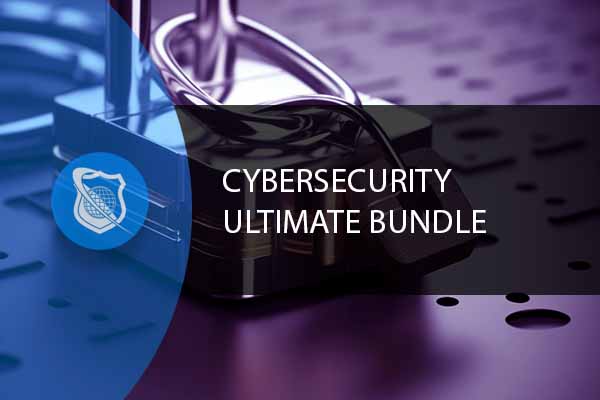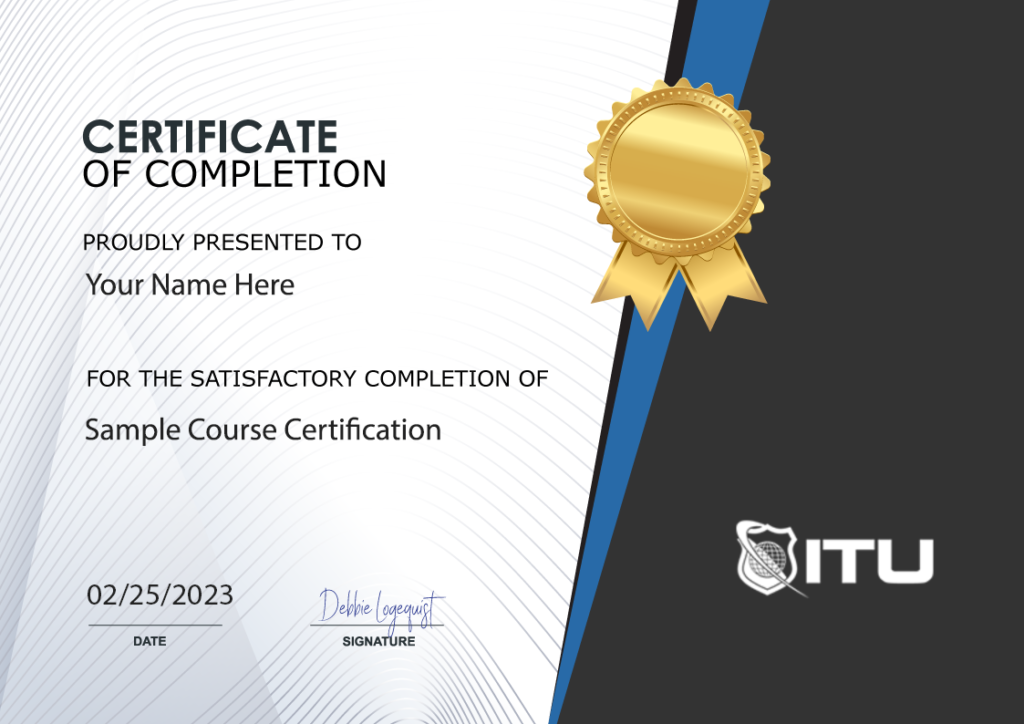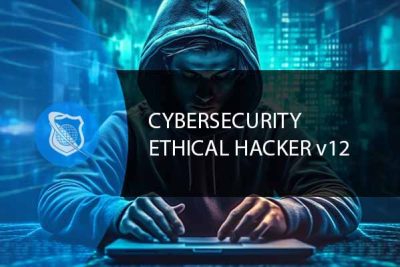
Lifetime
An ITU Online Training exclusive. The only Buy Once, Never Pay for IT training again program available. Plus, get all new and updated content for life.

With an All-Access Pass, you get access to every current and future ITU course. Access over 2,500 hours of on-demand IT Training 24/7. With over 13,000 on-demand training videos and 19,000+ practice questions, you'll have the tools to excel in the critical IT skills needed to elevate your IT Career. Our All-Access pass is available in three affordable plans.
Paris is the capital of France.
Tokyo is the capital of Japan.
Most Popular
Categories


With an All-Access Pass, you get access to every current and future ITU course. Access over 2,500 hours of on-demand IT Training 24/7. With over 13,000 on-demand training videos and 19,000+ practice questions, you'll have the tools to excel in the critical IT skills needed to elevate your IT Career. Our All-Access pass is available in three affordable plans.

ITU provides a vast array of IT-focused on-demand training designed to help you excel in both entry-level and advanced IT skills. Browse our most popular training or take a deper dive into our robust catalog of training categories.
Popular Courses All Categories
 CompTIA
Train for a globally recognized IT certification with our comprehensive CompTIA courses.
A+ | Network+ | Security+
CompTIA
Train for a globally recognized IT certification with our comprehensive CompTIA courses.
A+ | Network+ | Security+
 Cybersecurity
Master the art of combating cybersecurity threats and become a cyber hero.
Ethical Hacking (CEH) | CISSP | CISM
Cybersecurity
Master the art of combating cybersecurity threats and become a cyber hero.
Ethical Hacking (CEH) | CISSP | CISM
 Cloud Computing
An essential skill set in today's IT environments. Learn cloud computing platforms
Azure Administrator | Google Cloud | AWS Practitioner
Cloud Computing
An essential skill set in today's IT environments. Learn cloud computing platforms
Azure Administrator | Google Cloud | AWS Practitioner
 Project Management
Key to successful projects, learn the skills and methodolgy behind project management.
PMP | Risk Mgmt | Agile PM
Adobe
Business & Management
Cisco
Cloud Computing
CompTIA
Computer Support
Cybersecurity
Data Administration
Data Analysis
Development & Programming
Marketing & Social Media
Medical Coding & Billing
Microsoft
Microsoft Office
Network Administration
Networking & Software
Project Management
Web Development
Project Management
Key to successful projects, learn the skills and methodolgy behind project management.
PMP | Risk Mgmt | Agile PM
Adobe
Business & Management
Cisco
Cloud Computing
CompTIA
Computer Support
Cybersecurity
Data Administration
Data Analysis
Development & Programming
Marketing & Social Media
Medical Coding & Billing
Microsoft
Microsoft Office
Network Administration
Networking & Software
Project Management
Web Development

Certified Ethical Hacker v12 is the latest iteration of EC-Council’s Certified Ethical Hacker v12 series. ITU offers CEH training to provide you the tools to research, discover and scan targets, analyze vulnerabilities and test attack methods and tools. The focus of this CEH online training course is to solve the challenge of breaking into a target network, collect evidence of success, and escape unnoticed. Every lesson and topic are infused with step-by-step guided practice using real hardware- and software-based hacking tools. Throughout both lecture and hands-on activities, the instructor, Chrys Thorsen provides commentary from the field including tips, tricks and hard-learned lessons.
Included In This Course
Closed Captions
Certificate of Completion
Course Description
Embark on a transformative journey with our CEH training, the latest version in EC-Council’s Certified Ethical Hacker series. This CEH training for ethical hacking is meticulously designed to arm you with the skills to scan, analyze, and penetrate target networks. The course offers a blend of theory and hands-on activities, guided by experts sharing invaluable tips, tricks, and hard-learned lessons from the field. Our CEH training is presented by Chrys Thorsen, a certified ethical hacker and cybersecurity expert in her field.

Embark on a Thriving Cybersecurity Career! With our Ultimate Cyber Security training courses, you’ll dive into the world of ethical hacking, penetration testing, and network security. Our 15 comprehensive courses, led by industry experts, will equip you with essential Cybersecurity skills, setting you on the path to success in this ever-evolving field.
The CEH training cost for certification varies. To maintain your certified ethical hacker certification, you’ll need to earn Continuing Professional Education (CPE) credits over three years. For complete costs related to taking the CEH exam, visit the governing body, EC-Council website.
Pair your ethical hacking cert CEH training with our PenTest+ course to become a top-notch penetration tester. Our Ultimate Cybersecurity Bundle offers a comprehensive ethical hacking certification training, setting you on the path to success in this ever-evolving field. Start your CEH training today to propel your ethical hacker career.
This CEH training course is ideal for:
While no strict prerequisites are required, prior to beginning your CEH training, we recommend prior knowledge of networking and general web security principles. Completing CompTIA Network+ and CompTIA Security+ courses or equivalent before embarking on your CEH training is highly recommended. You’ll also need a 64-bit PC with VMware Workstation Player, 8GB+ RAM (16GB preferred), and 100GB of free disk space, running Windows 10 Professional or later.
Certified Ethical Hacker – CEH certification is one of the most sought-after certifications in the cybersecurity industry. ITU offers CEH training in both V11 and V12. It is an entry-level certification that validates an individual’s understanding of ethical hacking methodologies. EC-Council, the organization behind the CEH certification, has been updating the certification to keep up with the changing cybersecurity
In the digital age, securing networks and data has become a top priority for organizations across all industries. As such, the demand for qualified cybersecurity professionals is steadily on the rise. The Certified Ethical Hacker (CEH v11) Training is a prominent course that equips you with the skills and knowledge
In a world that is becoming increasingly digital, the importance of cybersecurity cannot be overstated. Our reliance on technology has grown exponentially in recent years, with everything from our personal information to our critical infrastructure being stored and managed online. This digital transformation has brought about many benefits, such as improved communication, increased efficiency, and access to new markets. However, it has also made us more vulnerable to cyber attacks.
If you’ve ever pondered the question, “how much is a hacker paid?”, you’re in good company. This query frequently occupies the thoughts of aspiring cybersecurity professionals, as well as organizations on the hunt for qualified ethical hackers.
Understanding the key terms related to Certified Ethical Hacker (CEH) V12 is crucial for anyone aspiring to enter the field of ethical hacking and cybersecurity. These terms form the foundation of knowledge required to navigate this complex and evolving domain. They are not only vital for passing the CEH certification exam but also for practical application in the cybersecurity industry.
| Term | Definition |
|---|---|
| Ethical Hacking | The practice of legally breaking into computers and devices to test an organization’s defenses. |
| Cybersecurity | The practice of protecting systems, networks, and programs from digital attacks. |
| Cryptography | The art of writing or solving codes; a critical aspect of securing communication and data. |
| Footprinting | The technique of gathering information about computer systems and the entities they belong to. |
| Reconnaissance | The practice of collecting information about an adversary in the preparation phase of a cyber-attack. |
| Scanning Networks | The process of identifying active devices on a network and their vulnerabilities. |
| Enumeration | The process of extracting user names, machine names, network resources, shares, and services from a system. |
| Social Engineering | The art of manipulating people to give up confidential information. |
| Phishing | A cybercrime in which a target is contacted by email, telephone, or text message by someone posing as a legitimate institution to lure individuals into providing sensitive data. |
| Malware | Software designed to disrupt, damage, or gain unauthorized access to a computer system. |
| Penetration Testing | The practice of testing a computer system, network, or web application to find vulnerabilities that an attacker could exploit. |
| Vulnerability | A weakness in a system that can be exploited by a cyber-attack. |
| Exploit | A piece of software, chunk of data, or sequence of commands that takes advantage of a bug or vulnerability to cause unintended or unanticipated behavior to occur on computer software, hardware, or something electronic. |
| SQL Injection | A code injection technique used to attack data-driven applications by inserting malicious SQL statements into an entry field. |
| Cross-Site Scripting (XSS) | A type of security vulnerability typically found in web applications that enables attackers to inject client-side scripts into web pages viewed by other users. |
| Intrusion Detection System (IDS) | A device or software application that monitors a network or systems for malicious activity or policy violations. |
| Firewall | A network security device that monitors and filters incoming and outgoing network traffic based on an organization’s previously established security policies. |
| Honeypot | A security mechanism set to detect, deflect, or study attempts at unauthorized use of information systems. |
| Risk Management | The forecasting and evaluation of financial risks together with the identification of procedures to avoid or minimize their impact. |
| Incident Management | A term describing the activities of an organization to identify, analyze, and correct hazards to prevent a future reoccurrence. |
These terms are essential for grasping the fundamental concepts in ethical hacking and cybersecurity. Mastery of these terms not only aids in CEH certification but also enhances practical skills in cybersecurity defense and attack strategies.
Does it really work? Short answers to these questions are clear: ‘Yes. Certified Ethics Hackers are an excellent investment that will only help you gain valuable skills. CEH provides an important qualification for your future career in addition to technical knowledge.
To become CEH a certified ethical one, you can follow these steps:
1. Take the Certified Ethical Hacker (CEH) course certification, which typically involves five days of training
2. Learn about the latest cybersecurity and information security threats, and develop the practical hacking skills needed to work as an a certified ethical hacker
3. Pass the CEH exam which consists of a total of 125 multiple-choice questions
4. Maintain your certification by earning 120 Continuing Professional Education (CPE) credits within three years
5. You can earn CPE credits by attending conferences, writing research papers, teaching training classes in a related domain, reading materials on related subject matters, and attending webinars
The Certified Ethical Hacker (CEH) certification exam, is a 4-hour exam with 125 multiple-choice questions. To become a Certified Ethical Hacker, prepare for the exam by taking our comprehensive CEH training and then complete the certification exam. The length of time it takes to prepare for the ceh certification training and exam can vary depending on your existing knowledge and experience, but it could take anywhere from a week to several months. To take the CEH certification exam, you need to fulfill one of two prerequisites and be over 18 years old
The cost of the Certified Ethical Hacker (CEH) certification varies depending on the type of training you choose. You can get started with the ITU Online course for Certified Ethical Hacker Certification Training – The InfoSec Institute estimates that the average salary for CEH holders is $83,591, with most holders earning between $45K and $129K per year.
The CEH certification is valid for three years from the date of certification. To maintain your certification, you are required to earn Continuing Professional Education (CPE) credits. These credits can be obtained through various activities such as attending training programs, participating in webinars, writing articles, and engaging in professional development activities related to ethical hacking and information security. By earning a sufficient number of CPE credits within the three-year period, you can renew your CEH certification.

Course Outline
Chrys Thorsen is an education and technology expert who specializes in enterprise-level IT infrastructure consulting and certified training-of-trainers. In her career, she has garnered over 50 IT Certifications including CISSP, CISA, CEHv12, PenTest+, CompTIA CNVP, Cisco CCSI/CCNP, Microsoft Cloud and on-premises technologies, VMware vSphere, and many more. She has also authored 40 published certification textbooks, and over 35 full-length IT certification video courses.
When not working in the United States, Chrys spends her time abroad capacity-building IT literacy in developing nations in Sub-Saharan Africa. Her client list has included: the US Federal Government, the Republic of Zambia Ministry of Health, Cavendish University Zambia, Accenture, JP Morgan Chase, the US Centers for Disease Control and Prevention, the Elizabeth Glaser Pediatric AIDS Foundation (EGPAF), Hughes Aircraft, Microsoft, and many more.
Chrys lives by, and is fond of repeating, her professional creed:
“The only true measure of success for any project or training is results on the ground. Everything else is just noise.” “I teach what I deploy; I deploy what I teach.”
Start this course for free with our 10-day trial of the all-access subscription providing access to over 2,600 hours of training.
$59.00

Monthly All-Access Subscription
7 Days Free - $39.00 / month
A great option at an affordable monthly price.
Annual All-Access Subscription
$229 / year
A discounted price when paying for your All Access library on an annual basis.
Lifetime All-Access Library
$379 One time payment
Exceptional Value. Pay once, never have to buy IT training again.
$49.00
The CISM certification training course is designed to provide on-the-job skills, as well as knowledge to pass the Certified Information System Manager (CISM) certification exam. This cybersecurity training focuses on more advanced topics and should be completed after various certifications in Cisco and Microsoft have been earned, such as PenTest+ or CySA+.
$49.00
This CHFI course will cover the security discipline of computer forensics from a vendor-neutral perspective and work towards preparing students to become Forensic Investigators in Computer Hacking.
$49.00
In this Microsoft 70-462: Administering SQL Server Databases course you will learn how to perform installation, maintenance, and configuration tasks. This course will also teach you other responsibilities including setting up database systems, making sure those systems operate efficiently, and regularly storing, backing up, and securing data from unauthorized access. This course will provide students with the knowledge and skills to maintain a Microsoft SQL Server 2012 database and focuses on teaching individuals how to use SQL Server 2012 product features and tools related to maintaining a database.

Unlock endless learning opportunities with over 2,500 hours of IT training at our lowest price ever. Plus, get all new and updated online courses for free while your subscription remains active.
Cancel at your convenience. This exceptional deal on IT training provides you access to high-quality IT education at the lowest monthly subscription rate in the market. Boost your IT skills and join our journey towards a smarter tomorrow.
I’ve enjoyed the training so far. Wish it was more focused on Linux like other training, but still good.
The educators at ituonline.com are highly skilled but could improve their methods of instruction. In the CCNA 200-301 course, there’s a heavy emphasis on oral lectures, and it would be beneficial to include more in-depth visual aids. Annotating labs and graphics could also make the educational journey more effective. On the other hand, the N10-008 course instructor consistently offers top-notch material.
This course is super detailed but not boring, and they give you cool projects to actually practice what you’re learning.